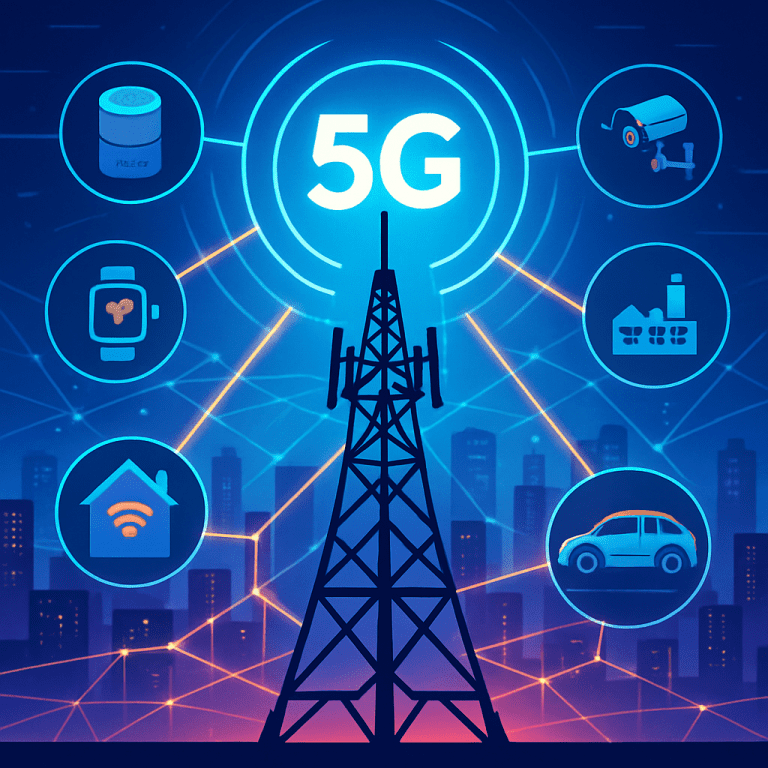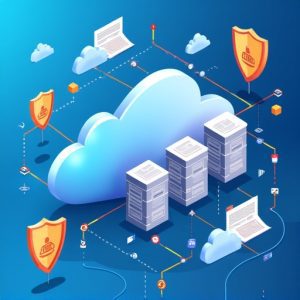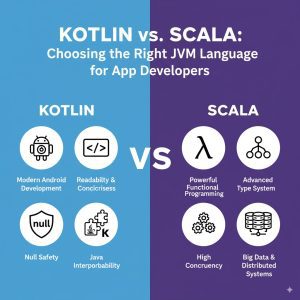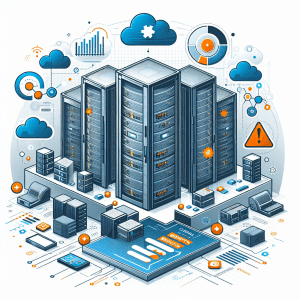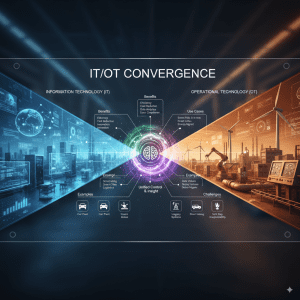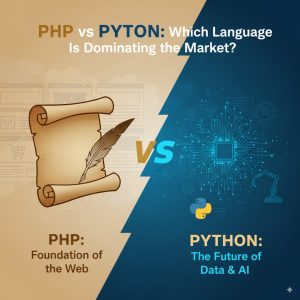Introduction
The convergence of Internet of Things (IoT) with telecom infrastructure is transforming communication networks into intelligent, responsive ecosystems. As billions of connected devices rise worldwide, telecom providers are evolving to support smart networks empowered by 5G technology. This fusion is ushering in an era of real-time data exchange, ultra-low latency, and unprecedented connectivity that fuels innovations across industries. This blog explores how IoT reshapes telecom from traditional connectivity to intelligent, automated networks, the role of 5G in powering this evolution, and emerging opportunities for businesses adapting to this technology wave.
This discussion reflects insights from leading AI and telecom research, drawing on resources like TechOTD’s AI services and industry trends from their tech blog.
What is IoT in Telecom?
IoT in telecom refers to the vast network of connected devices communicating over telecom infrastructure to exchange data and automate processes. This goes beyond traditional smartphones to include sensors, wearables, smart meters, connected vehicles, and more. Telecom operators provide the backbone connectivity ensuring these devices remain online with reliable bandwidth, security, and management.
Key features include:
-
Massive device connectivity: Efficiently connecting billions of IoT endpoints.
-
Low latency communication: Supporting real-time applications like autonomous vehicles and remote surgery.
-
Network slicing: Custom virtual networks tailored to specific IoT use cases.
IoT transforms telecom from a simple communication provider to a platform operator enabling intelligent services.
The Role of Smart Networks
Smart networks integrate AI, machine learning, and automation into telecom infrastructure, optimizing performance and enabling new intelligent applications. Some important capabilities include:
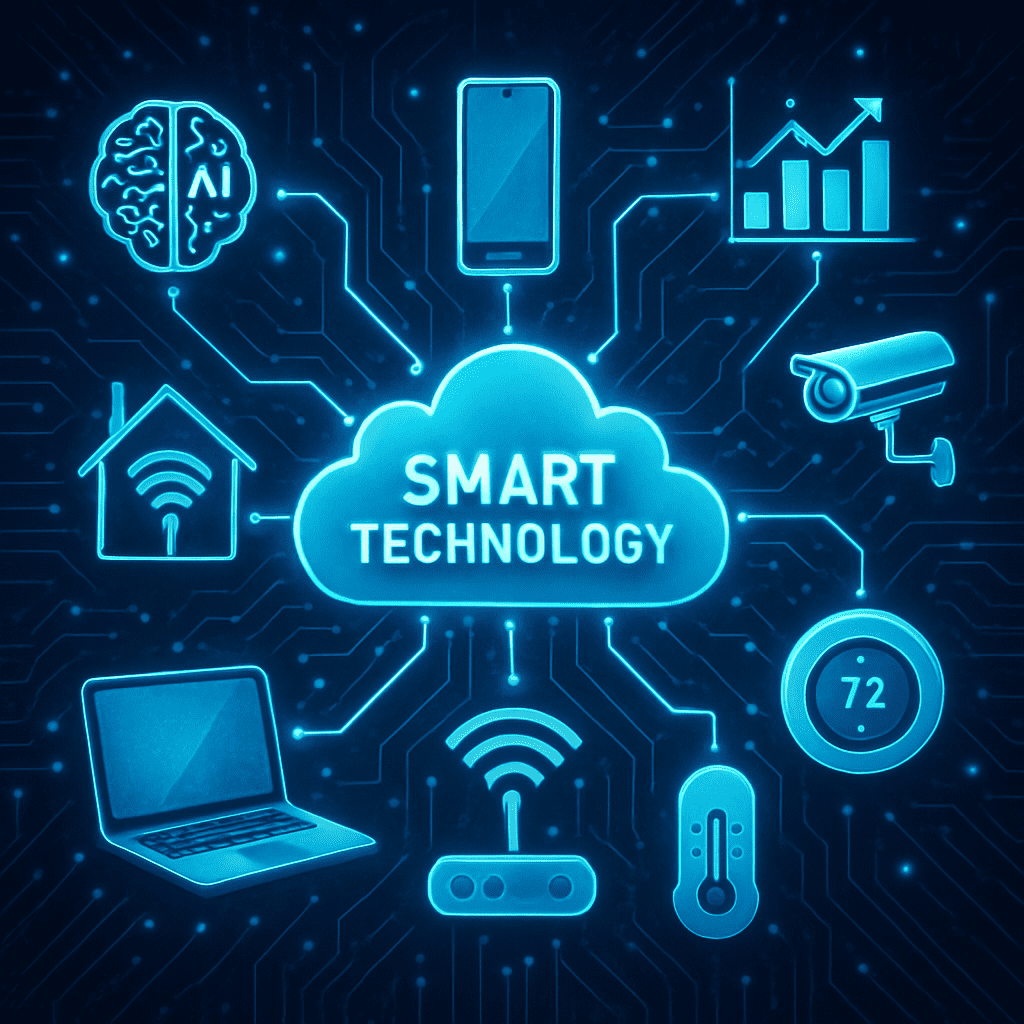
-
Dynamic network management: AI algorithms monitor network health to predict failures and optimize routing.
-
Automated provisioning: Devices and connections are configured on-demand without manual intervention.
-
Enhanced security: AI-driven threat detection protects IoT endpoints against increasingly complex cyber-attacks.
Smart networks elevate the telecom role, powering innovations like smart cities, Industrial IoT (IIoT), and connected healthcare.
Explore AI’s role in telecom innovations at Seamless Customer Journeys with AI.
5G: The Catalyst for IoT Growth in Telecom
5G technology revolutionizes telecom’s capacity to support and scale IoT applications by offering:
-
Higher bandwidth: Up to 100x faster data speeds enable rich media streaming and instantaneous data exchange.
-
Ultra-low latency: End-to-end latency as low as 1 ms supports mission-critical applications.
-
Massive IoT connections: Network efficiency accommodates 1 million+ devices per square kilometer.
-
Improved energy efficiency: Prolongs battery life for IoT devices enhancing deployment feasibility.
With 5G, telecom networks become an engine for smart industries, cities, and daily life integration.
Discover 5G-powered software insights in TechOTD’s mobile solutions here:
Mobile Apps Services.
Use Cases: How IoT and 5G Transform Telecom Solutions
1. Smart Cities and Infrastructure
IoT sensors integrated with 5G networks deliver real-time monitoring and automation for public services such as traffic management, waste disposal, and environmental sensing. Cities benefit from optimized resource usage and reduced operational costs.
2. Connected Healthcare
Remote patient monitoring devices continuously send health data over secure, low-latency 5G telecom networks to hospitals, enabling early interventions and ongoing care without hospital visits.
3. Industrial Automation (IIoT)
Factories deploy IoT-enabled machines connected through 5G, allowing predictive maintenance, enhanced safety, and streamlined supply chains powered by real-time data analytics and AI.
4. Autonomous Vehicles and Transport
5G’s ultra-low latency supports vehicle-to-everything (V2X) communication, enabling autonomous cars to interact safely with surrounding traffic, infrastructure, and pedestrians.
Challenges and Opportunities in Implementing IoT in Telecom
Challenges
-
Security: IoT devices increase the attack surface, necessitating robust AI-powered security measures.
-
Interoperability: Diverse device standards require unified telecom protocols and advanced integration frameworks.
-
Data Management: Massive data flows demand scalable analytics platforms with edge computing.
Opportunities
-
Telecom providers can expand beyond voice/data services into managed IoT solutions and AI-powered analytics offerings.
-
AI consulting and custom models help optimize IoT network deployment and predictive maintenance.
-
Telecom’s integration with blockchain enhances IoT data transparency and security, as seen in Dubai’s pioneering projects. Learn more about this integration:
How Blockchain Integration Is Optimizing Business Processes in Dubai
Integrating AI and Analytics in IoT Telecom Networks
AI technologies embedded within telecom IoT frameworks enable predictive analytics, anomaly detection, and operational automation that deliver superior network performance. Examples include:
-
Trend analysis to predict network congestion before it happens.
-
Risk assessment for IoT endpoint security vulnerabilities.
-
Sentiment analysis based on user data to customize telecom service offerings.
TechOTD’s AI consulting and custom solution development empower telecom businesses to fully leverage IoT insights:
TechOTD AI Services.
How Telecom Businesses Can Prepare for IoT and 5G Evolution
-
Invest in AI-powered workflow automation and process monitoring to manage complex IoT ecosystems.
-
Design custom AI models for network optimization and customer experience enhancement.
-
Collaborate with technology partners skilled in AI, cloud, and telecom integration—such as TechOTD’s expert teams.
-
Develop secure, compliant IoT solutions with real-time analytics capabilities.
Learn about the structured approach TechOTD follows for AI and IoT integration here:
How We Work at TechOTD.
The Future: IoT, Telecom, AI, and Beyond
The future is bright for IoT-enabled telecom, with innovations accelerating thanks to AI advancements, scalable cloud computing, and increasing 5G adoption. Areas to watch include:
-
Integration of Large Language Models (LLMs) for enhanced telecom customer support and predictive maintenance. See examples in this domain:
Large Language Models in Finance: Benefits and Applications -
IoT empowerment for education technology, blending AR and immersive learning via 5G networks. Learn more about tech impact on education:
Technology Impact on Education: An Ultimate Guide -
Adoption of smart gadgets designed for telecom programmers and IoT developers to streamline innovation. Check out the latest tools:
Best Gadgets for Programmers in 2025.
Conclusion
IoT’s integration in telecom networks, supercharged by 5G and AI, is not just futuristic—it is already revolutionizing connectivity paradigms across industries. Smart networks enable new service models, cost efficiencies, and personalized experiences, while AI and blockchain ensure security and scalability. Telecom operators embracing this transformation will lead in the next digital wave.
To explore practical AI, cloud, and IoT solutions tailored for telecom, connect with TechOTD’s experts today for a free consultation:
TechOTD Mobile Apps & AI Services
For deeper insights across related domains, visit TechOTD’s extensive blog library:
TechOTD Tech and Innovation Blog.
FAQs
Q1: What role does 5G play in IoT telecom innovation?
5G provides ultra-fast speeds, massive connectivity, and low latency essential for supporting diverse, real-time IoT applications in telecom.
Q2: How does AI enhance IoT in telecom networks?
AI enables predictive analytics, automated operations, and security monitoring, optimizing telecom network performance and user experience.
Q3: What are the biggest challenges for telecom operators adopting IoT?
Security, interoperability among diverse devices, and managing huge data volumes remain top challenges.
Q4: How can blockchain help telecom IoT solutions?
Blockchain increases data transparency, security, and trustworthiness—critical for IoT transactions and network integrity.
Q5: Where can telecom businesses learn more about AI and IoT integration?
TechOTD provides comprehensive AI, IoT, and telecom integration solutions with expert consulting and custom development.
